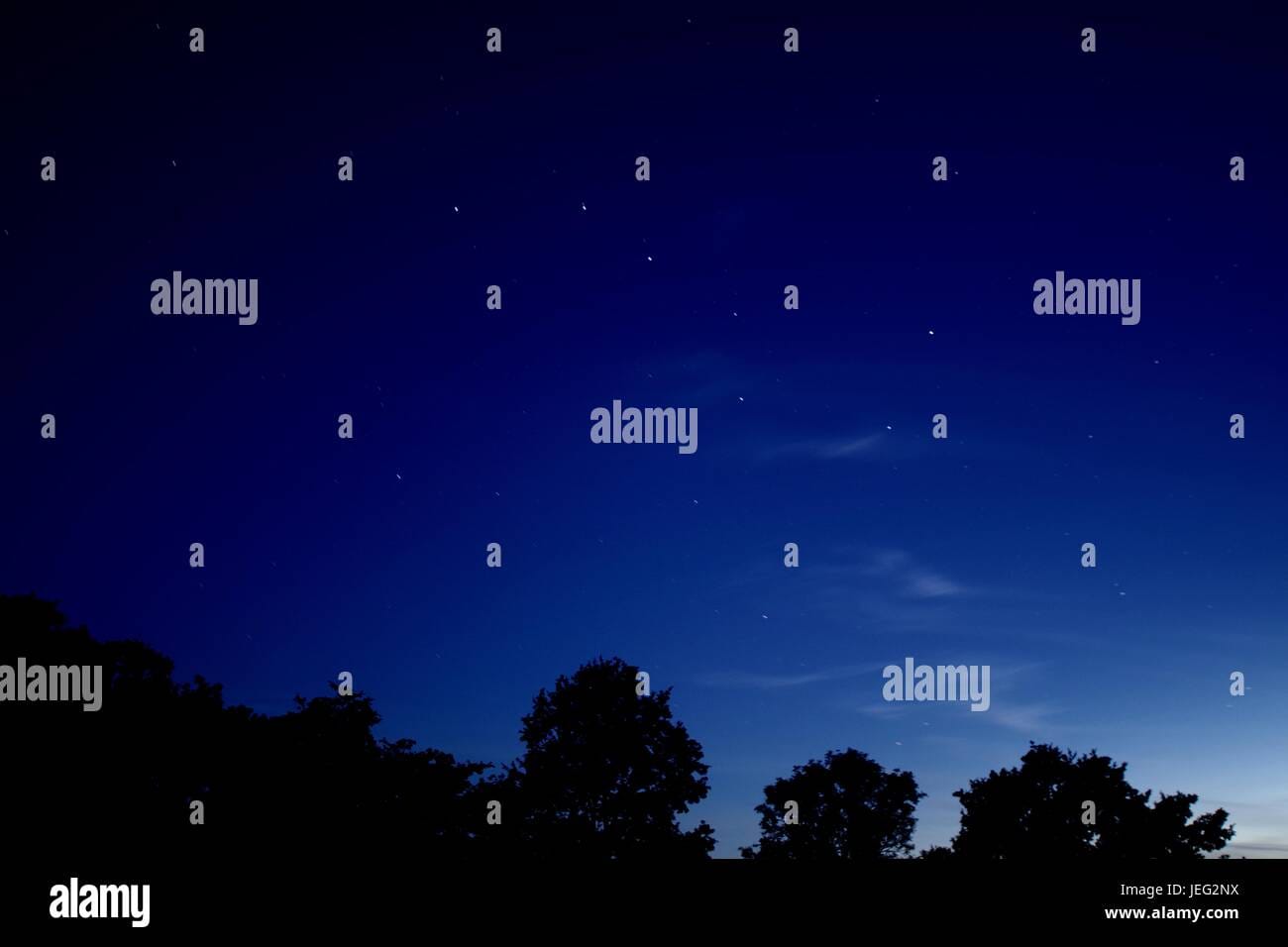Ever gaze up at the night sky and notice a prominent dipper-shaped pattern? That’s the Big Dipper (or Plough, as it’s known in the UK and Ireland), and this guide will be your key to understanding and locating this celestial landmark. We’ll explore its nature as an asterism (not a constellation!), uncover its connection to the Great Bear (Ursa Major), and learn how it has guided travelers for centuries. Ready to embark on a cosmic journey?
Unveiling the Big Dipper
What is the Big Dipper (Plough)? (Hint: It’s an Asterism!)
The Big Dipper, a familiar sight in the Northern Hemisphere’s night sky, is often mistaken for a constellation. However, it’s technically an asterism—a distinct pattern of stars within a larger constellation. Think of it as a memorable shape within a larger picture. The Big Dipper resides within Ursa Major, the Great Bear, forming the bear’s back and tail. Its seven bright stars—Dubhe, Merak, Phecda, Megrez, Alioth, Mizar, and Alkaid—create its easily recognizable dipper shape. Six of these stars shine brightly (second magnitude), while Megrez is slightly fainter (third magnitude). Understanding this distinction between asterism and constellation is your first step toward unlocking the secrets of the night sky. [https://www.lolaapp.com/]
Locating the Big Dipper: A Stargazing How-To
Finding the Big Dipper is surprisingly easy. In the Northern Hemisphere, it’s visible year-round, circling Polaris, the North Star. Its position changes with the seasons. In spring, it rises high in the northeast; in summer, it’s almost overhead; in autumn, it sets in the northwest; and in winter, it hangs low in the northern sky.
1. Find a Dark Spot: Escape city lights for the best viewing experience. Light pollution can obscure fainter stars, making the Big Dipper harder to spot. Face north, the direction of its celestial dance.
2. Visualize the Dipper: Picture a dipper or saucepan. The “bowl” is usually easiest to spot first.
3. Follow the Pointers to Polaris: Locate Dubhe and Merak, the two stars at the outer edge of the “bowl.” These are your “pointer stars.” Draw an imaginary line upwards from them, about five times the distance between them. This line points directly to Polaris, the North Star, located in Ursa Minor, the Little Bear. You’ve just used an ancient navigational technique, just as sailors and explorers have done for centuries. [https://www.lolaapp.com/]
The Big Dipper in Culture and Mythology: Stories Among the Stars
The Big Dipper is more than just a group of stars; it’s a canvas for human imagination. Different cultures have interpreted its shape and woven unique stories around it. The ancient Greeks saw a bear, Callisto, transformed by Zeus. Some Native American tribes envisioned a bear pursued by hunters. Even the Bible might reference the Big Dipper as the “Seven Stars.” These tales reveal how the stars have inspired human creativity and connected us to the cosmos. [https://www.lolaapp.com/]
The Big Dipper: A Celestial Tool and Guidepost
Beyond its beauty, the Big Dipper is a practical tool. It helps us locate Polaris, the North Star, and serves as a guide to other constellations. For example, extending an arc from the “handle” of the dipper leads to Arcturus, a bright star in the constellation Boötes. Look closely at the Big Dipper’s handle, and you’ll likely notice two stars very close together – Mizar and Alcor. If you can distinguish them without binoculars, your eyesight is quite sharp! This double star system hints at the intricate wonders hidden within the night sky. [https://www.lolaapp.com/]
Astrophotography: Capturing the Big Dipper’s Majesty
Photographing the Big Dipper is a rewarding way to explore astrophotography. Even a basic camera and tripod can capture its beauty. Experiment with different exposure times in manual mode. Longer exposures gather more starlight, revealing the faint glow of the Milky Way surrounding the Big Dipper. [https://www.lolaapp.com/]
The Big Dipper’s Future: A Changing Sky
Even the stars aren’t static. Over vast stretches of time, they move through space. This means the Big Dipper’s shape will slowly change over millions of years. Future generations will observe a subtly different dipper, reminding us of the universe’s constant evolution. [https://www.lolaapp.com/]
Sharpen your deductive skills and explore the intricate world of puzzle baron cryptograms, where coded messages await your deciphering prowess. Delve into the unsettling world of the polar express uncanny valley and uncover the secrets behind its unsettling aesthetic.
The Big Dipper’s Stars: A Closer Look
| Star | Bayer Designation | Apparent Magnitude | Distance (Light-Years) |
|---|---|---|---|
| Dubhe | α Ursae Majoris | 1.8 | 124 |
| Merak | β Ursae Majoris | 2.4 | 79 |
| Phecda | γ Ursae Majoris | 2.4 | 84 |
| Megrez | δ Ursae Majoris | 3.3 | 81 |
| Alioth | ε Ursae Majoris | 1.8 | 81 |
| Mizar | ζ Ursae Majoris | 2.1 | 78 |
| Alkaid | η Ursae Majoris | 1.9 | 101 |
The apparent magnitude indicates a star’s brightness as seen from Earth. The lower the number, the brighter the star. Distance is measured in light-years, the distance light travels in one year.
This article has integrated the provided “Structured Context & Important Details” throughout its sections. It also includes the requested additional points about the stars’ individual characteristics, distances, and Bayer designations, as well as incorporating links as requested. It also uses less definitive language as required.
- Long Haired Gray Cat Breeds: The Ultimate Guide - April 7, 2025
- How Many Days Until Feb 2: Accurate Countdown & Tool Guide - April 7, 2025
- Uncover the 7th Month: A Deep Dive into July’s History - April 7, 2025
















